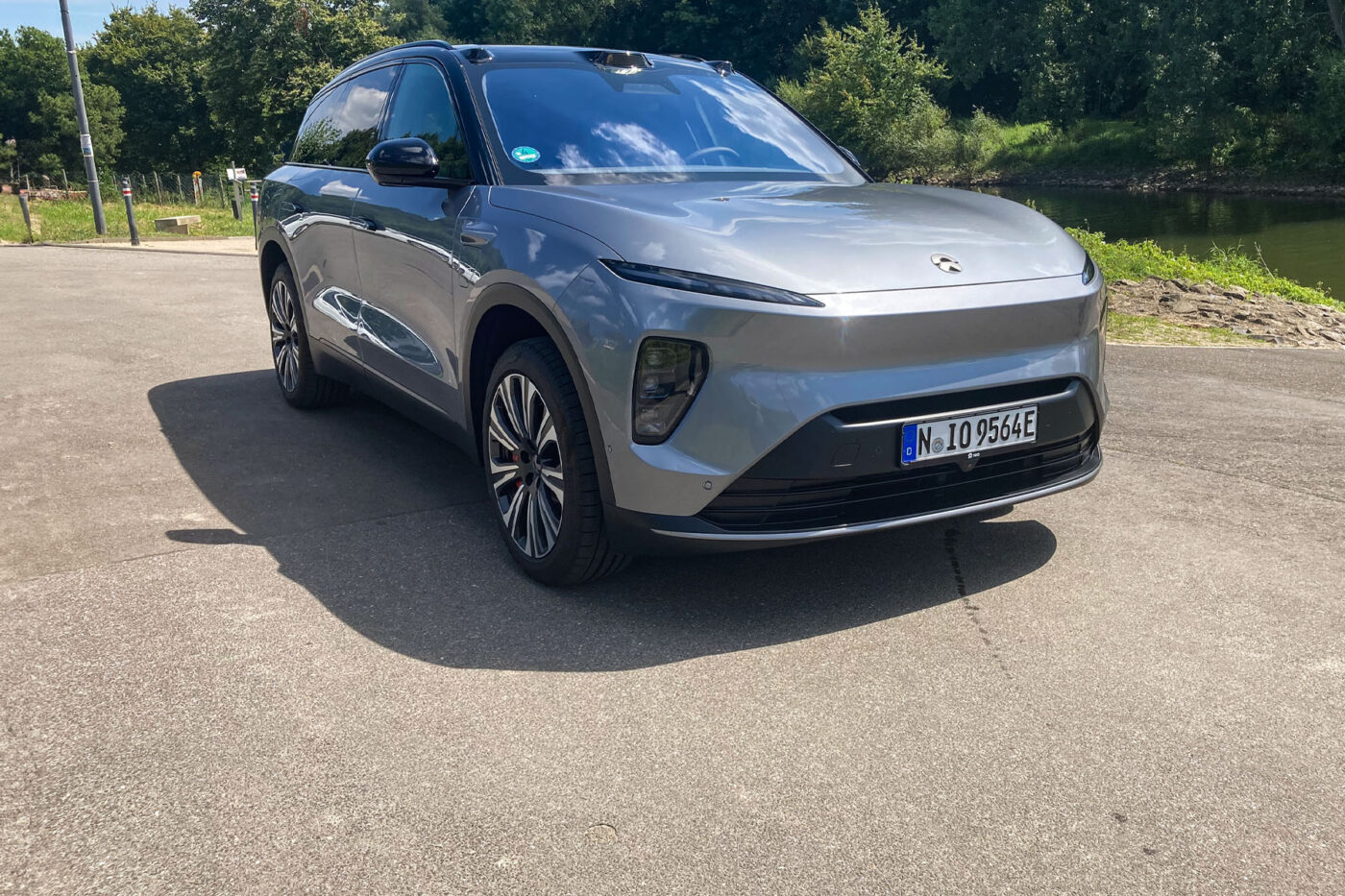
First drive in the Nio EL8: The slightly different luxury SUV
With the EL6 and EL7 (formerly available as the ES8), Nio already has two SUV models on sale in Europe, one in the competitive but potentially high-volume mid-size class and one in the luxurious luxury class segment. The almost 5.10 metre-long EL8 now complements this luxury class offering with its own approach: while the 4.91 metre-long EL7 is a classic five-seater with a full-length rear bench and large boot, the EL8 is only available as a six-seater in two variants. Two comfortable individual seats are installed in the second row, and there are two more seats in the rear – more on this later.
Like the EL7 and the large ET7 saloon, the new EL8 is also based on the so-called NPB, the ‘Nio Platform B’ – in contrast, the smaller models ET5, ET5 Touring and the EL6 use the ‘Nio Platform C’, or NPC for short. The (interchangeable) batteries are the same for both platforms, but the drive system differs: the NPC models have an output of 360 kW, while the large NPB series offers 480 kW.
The power is split between a 180 kW permanent magnet motor on the front axle and a 300 kW induction motor at the rear. The two different operating principles were chosen so that the induction motor can be switched off without clutch and losses when required, while the permanently excited synchronous motor at the front runs continuously.
Driving modes differ greatly
In other words, in a few driving situations, the large EL8 can become a pure front-wheel drive vehicle. As Benjamin Steinmetz, Product Experience Director Europe, explains in an interview with electrive on the sidelines of the driving presentation, this can be the case when the vehicle is travelling at a constant speed on the motorway with cruise control. “However, as soon as the vehicle accelerates dynamically, the electric motor on the rear axle engages so that we have an all-wheel drive for driving stability,” says Steinmetz.
Behind the wheel, the driver really doesn’t feel which engine is currently active – the changes are finely tuned and take place imperceptibly. How the engines respond also depends heavily on the selected driving mode. In the Nio, the Eco, Comfort, Individual, Sport and Sport+ modes are very different from each other, especially in terms of the response to the accelerator pedal. Even in Eco mode, it is not completely boring, but in Sport or even Sport+ mode, the 2.6-tonne SUV reacts much more directly. The driving modes not only adjust the drive but also the steering and suspension. By the way, if you briefly press and hold the two outer steering wheel buttons, you can switch directly to Sport+ mode – and back again – without having to use the touchscreen. Practical if you briefly want sportier acceleration behaviour for an overtaking manoeuvre.
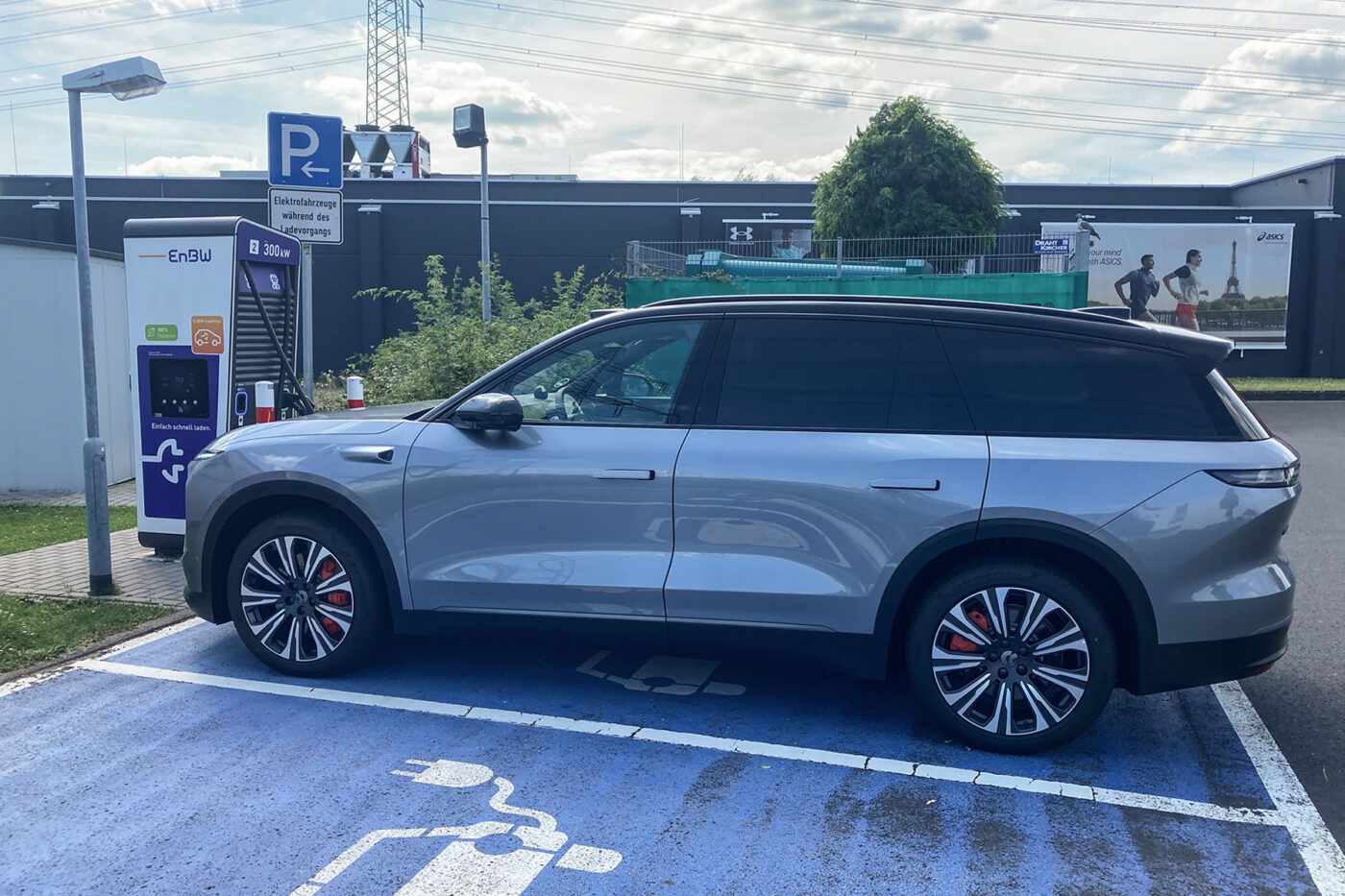
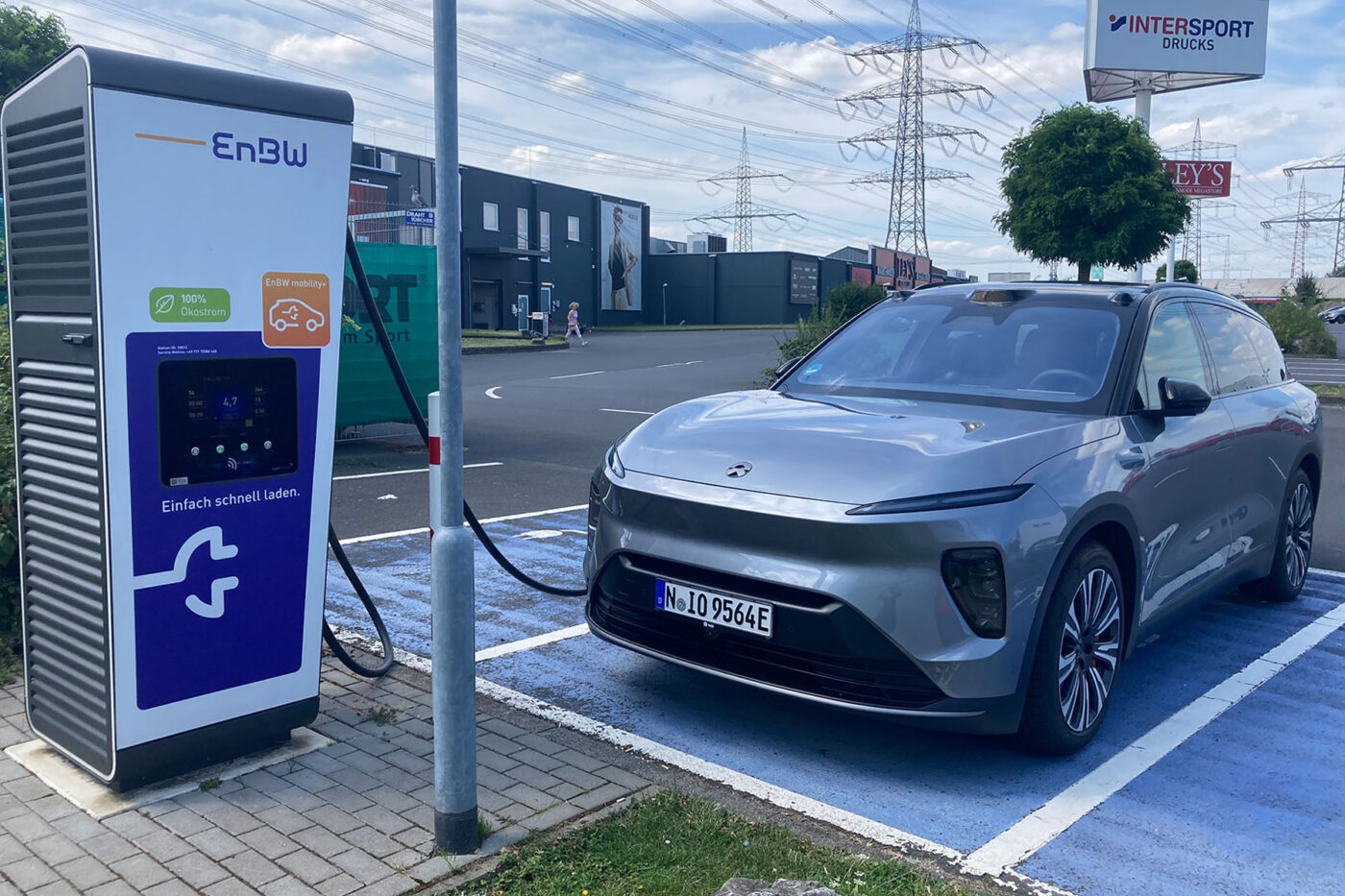
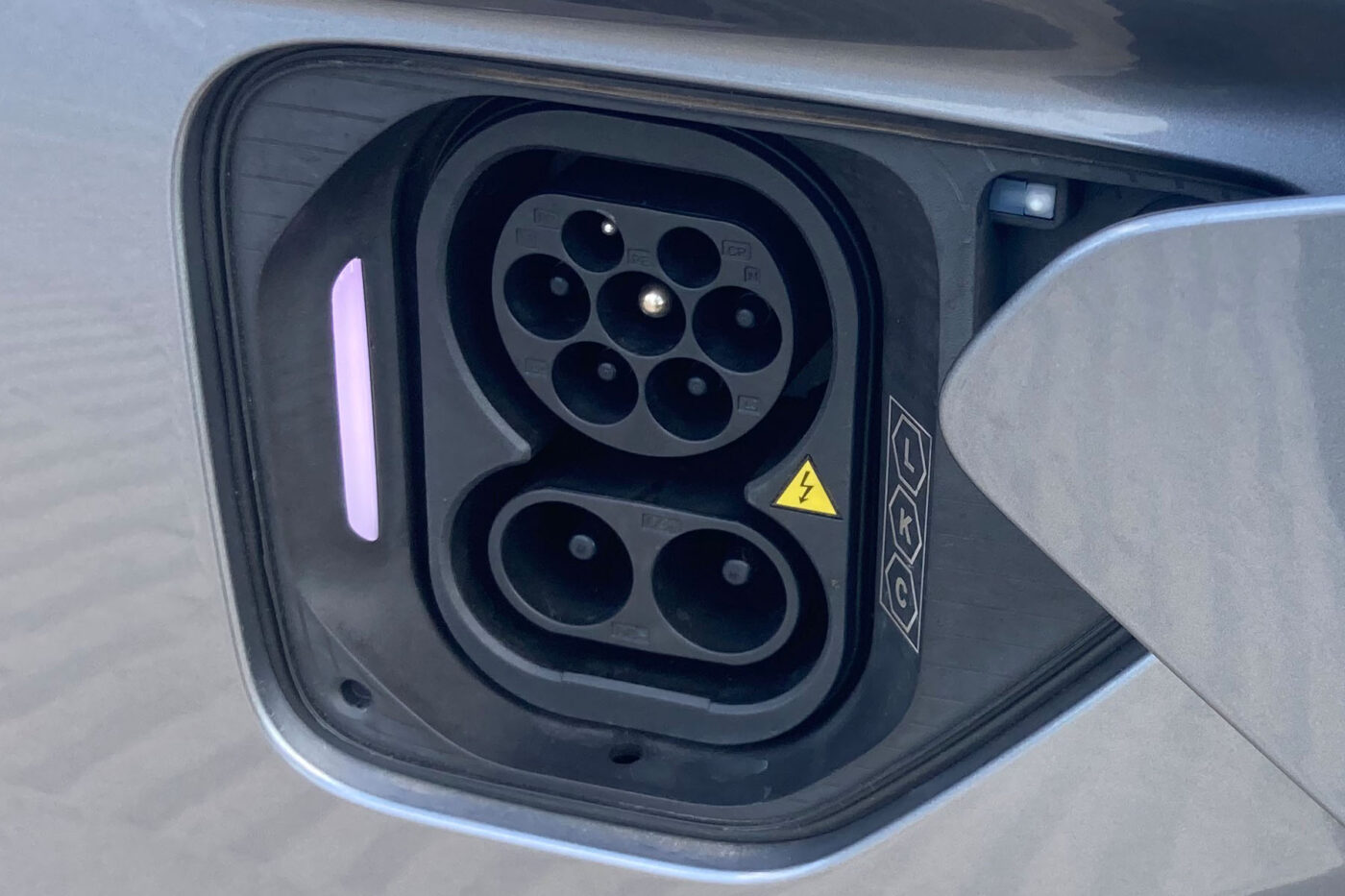
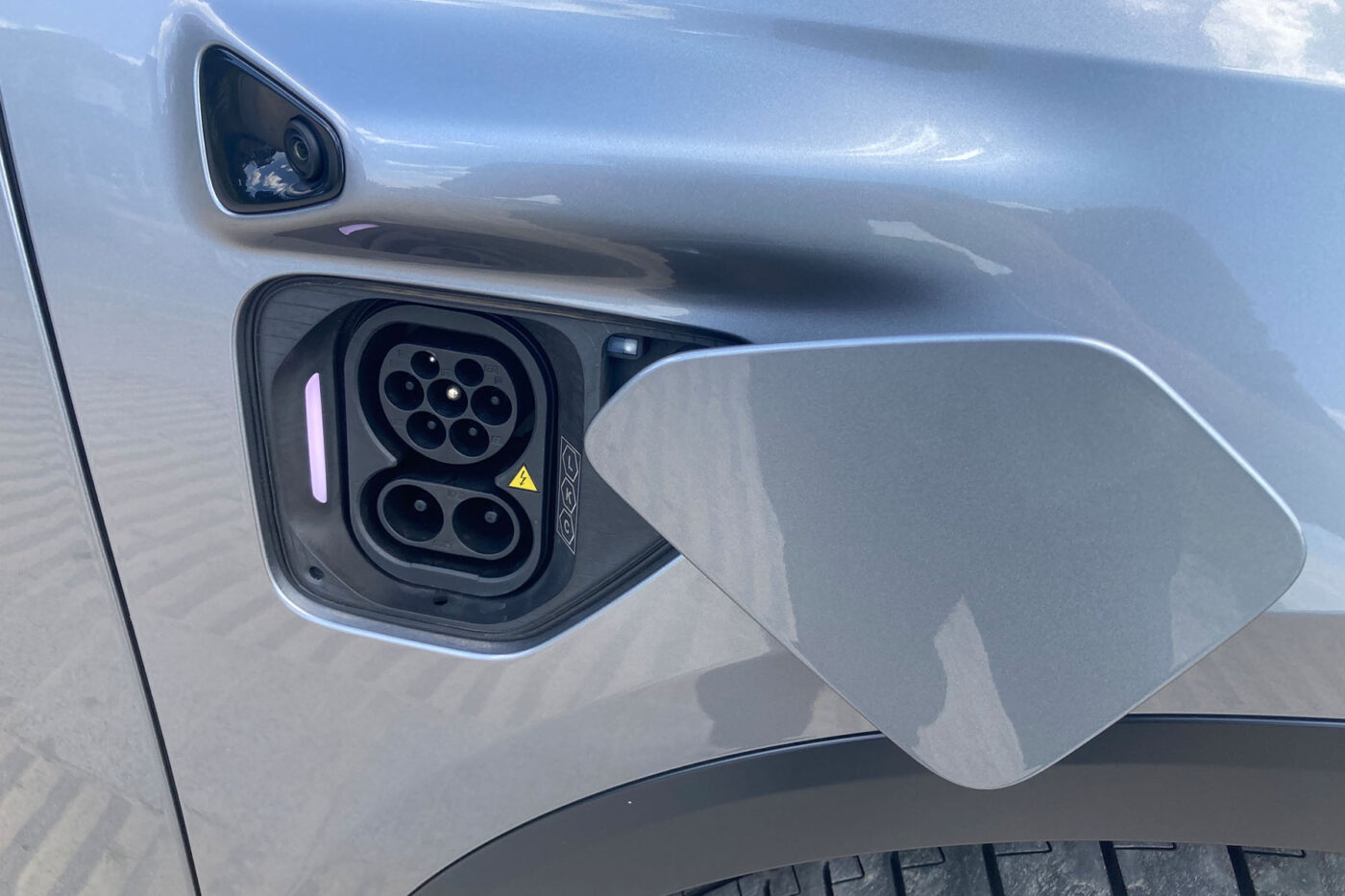
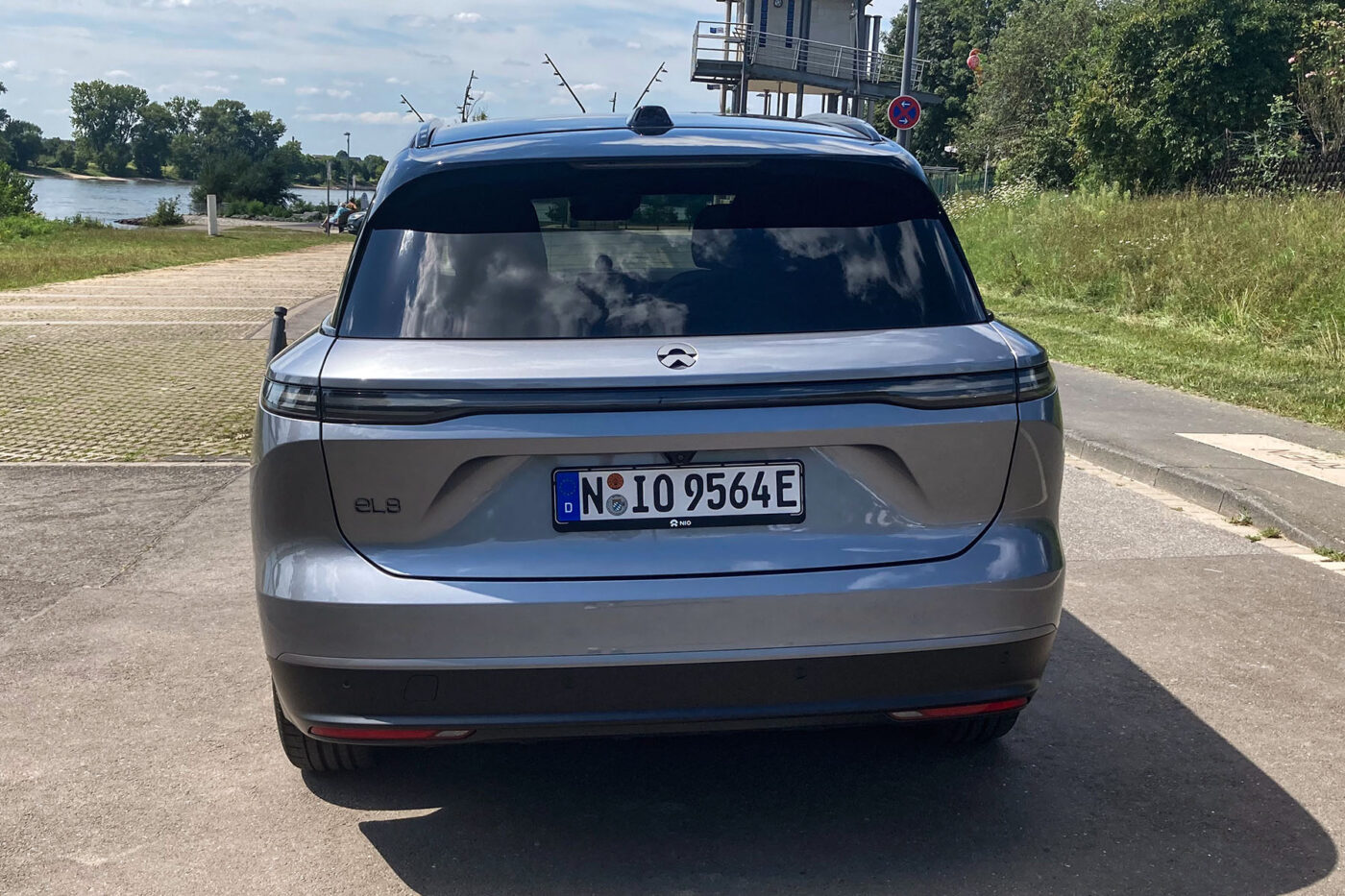
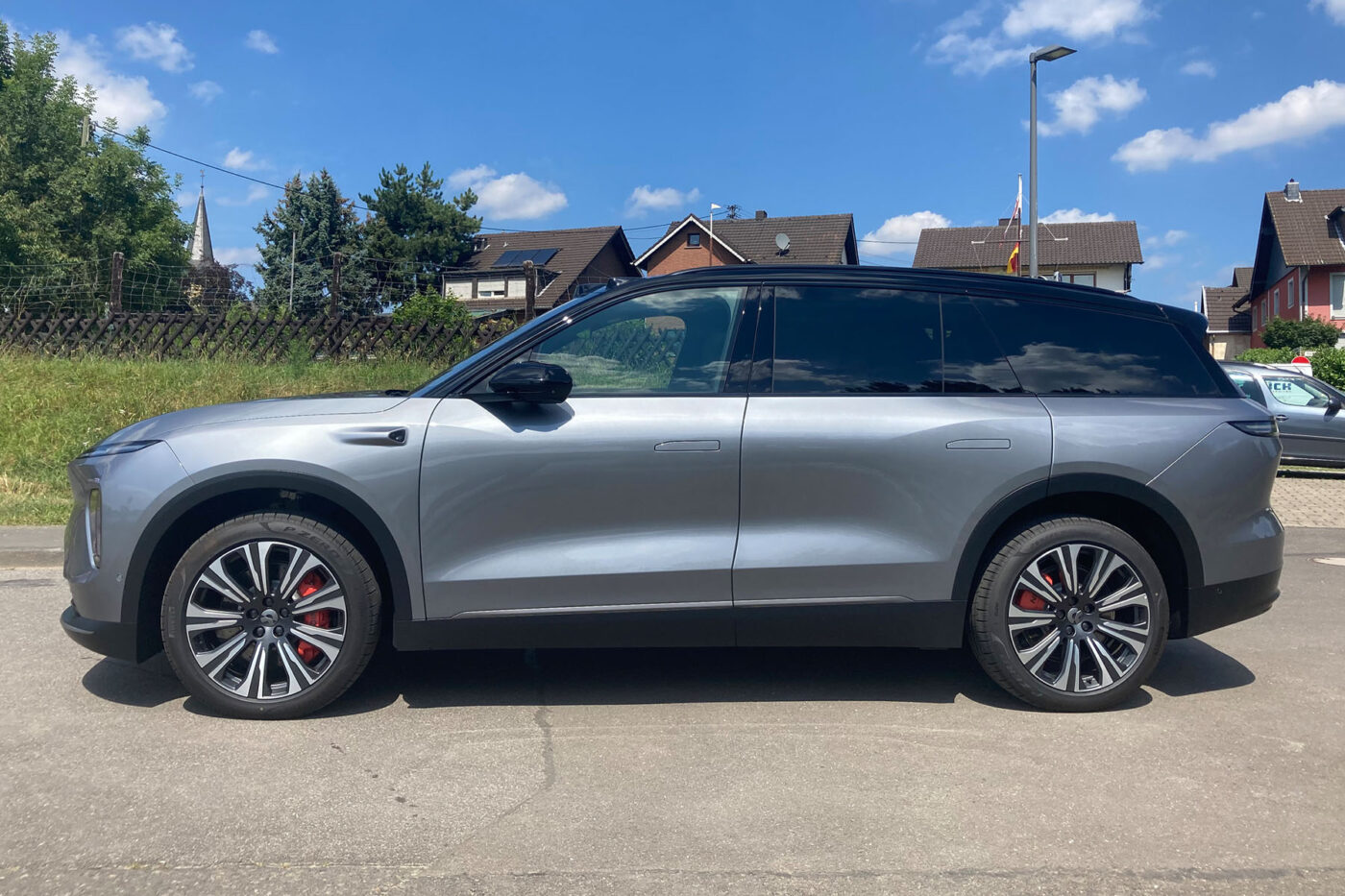
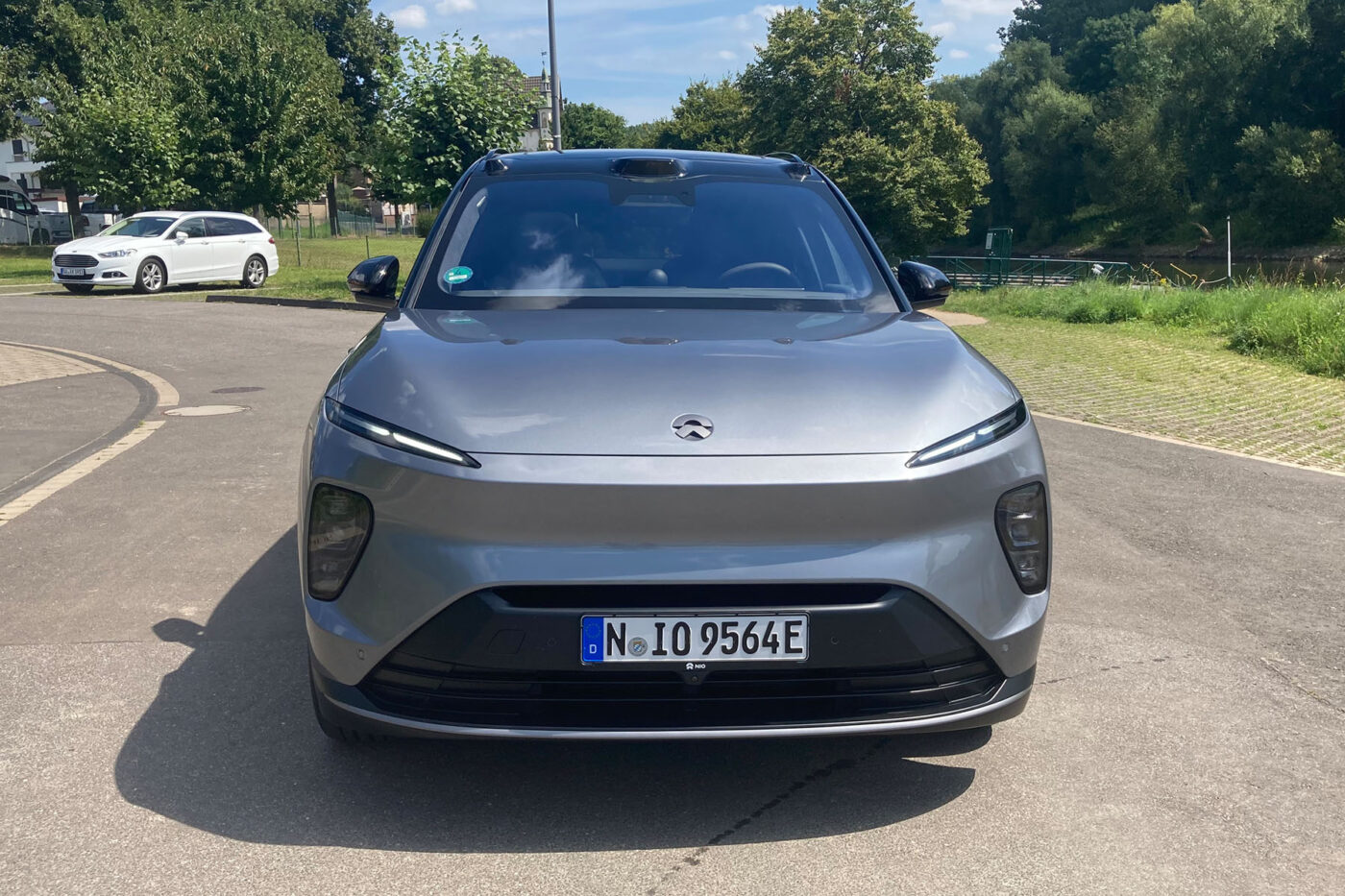
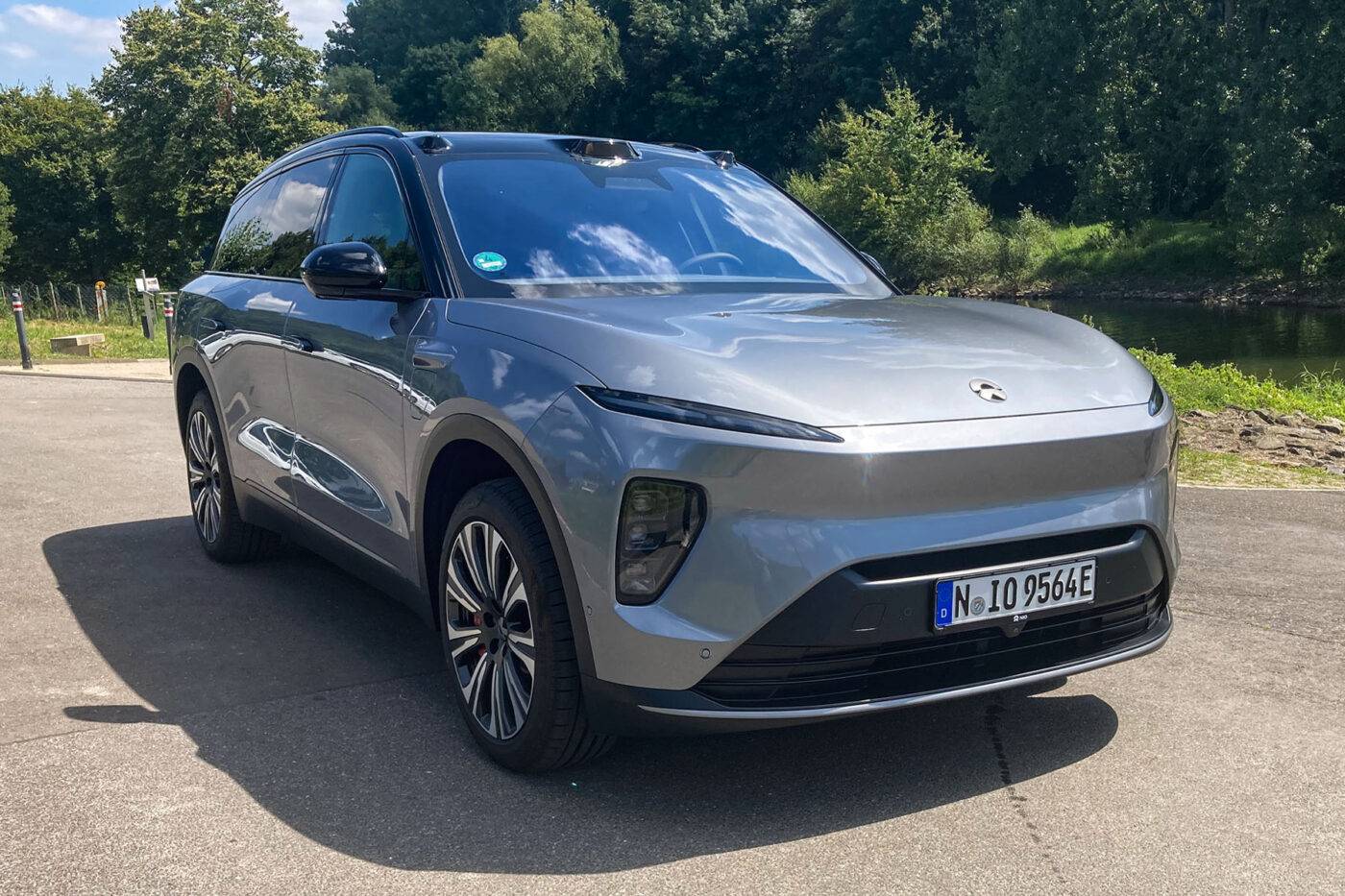
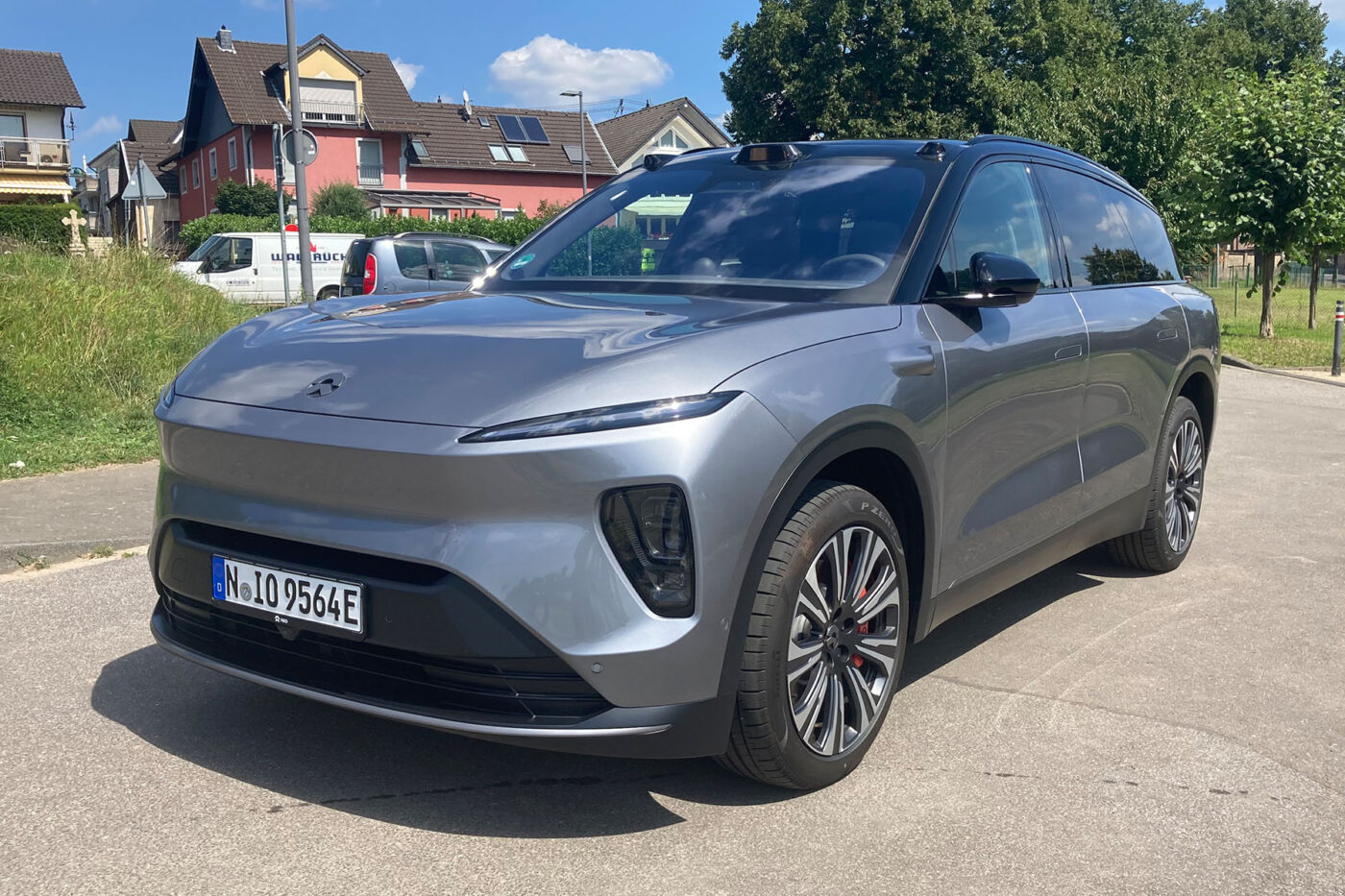
Regardless of the high performance, the EL8 is rather comfortable, as the vehicle is positioned as a chauffeur or family SUV. Nio has thus changed the air suspension from a single-chamber system to two chambers, which enables more precise control of the rebound and compression damping. Even with the 21-inch wheels on our test car – Nio also offers 22-inch wheels on the EL8 for the first time – the suspension comfort is extremely good. In the Sport modes, it is a little firmer and more direct, but not really sporty. The EL8 cannot shed its rather comfort-orientated basic design.
But it doesn’t want to; Nio has other models in its programme for cornering. On fast bends, the EL8 leans slightly to one side, and the front seats offer only moderate lateral support. However, when it comes to relaxed cruising, the chassis and seats are excellent. You should be aware of this design. Instead of sporty moulded side bolsters on the seats, you can enjoy the massage function in the EL8 – or the reclining position on the front passenger seat, including an electrically extendable footrest in the footwell. The disadvantage of the latter: As the tips of the feet then disappear under the dashboard, there is no classic glove compartment in the EL8 – this would require precisely the space that Nio has provided for the front passenger’s feet in the relaxed reclining position. Either or.
There is no either-or when it comes to charging. The EL8 is, of course, compatible with Nio’s battery exchange stations, the so-called Power Swap Stations – there are currently 51 of these in Europe, 17 of which are in Germany. According to Nio’s General Manager Germany, Christian Wiegand, there should be “more” by the end of the year. However, the manager did not want to commit to a number in front of the journalists at the Nio Hub in Cologne. Depending on the generation of the available power swap station, the EL8 battery can be changed in five (generation 2) or three (generation 3) minutes. And the battery can also be charged via a CCS connection.
More charging power for a large battery
There is a further development in the EL8 that offers some customers real added value. Previously, the large Nio battery with 100 kWh gross/90 kWh net could be charged with a maximum of 140 kW, resulting in charging times of almost 40 minutes from ten to 80 per cent. The charging technology installed in the EL8 now enables up to 185 kW at charging stations with a peak charging current of 500 amps with identical batteries. These are the fast chargers still commonly used today, such as the Alpitronic Hypercharger HYC300 with a maximum charging capacity of 300 kW, which is widely used in Germany. The highlight of the EL8, however, is that it can handle more than the usual 500 amps. Similar to Tesla, Nio has increased the maximum possible current, and Steinmetz speaks of 660 amps. As newer charging stations such as the Hypercharger HYC400 (with a maximum charging capacity of 400 kW) can briefly deliver up to 600 amps in boost mode, the EL8 should be able to charge with up to 240 kW at such stations – according to Steinmetz, this is also possible with the Tesla Supercharger V4. However, this only applies to the large 100 kWh battery. With the 75-kWh battery with LFP cells, the peak output remains at 140 kW – regardless of 500 or 600 amps.
A small note regarding the battery: in Germany, it is still not possible to switch flexibly between the two products in Nio’s ‘Battery-as-a-Service’ swapping offer. As with the battery purchase, the customer must thus decide when ordering whether they want the 75-kWh battery with LFP cells for 390 kilometres WLTP range or the 100-kWh battery with NMC cell chemistry for 510 kilometres. A later switch – for example, using the large battery for holiday trips for an extra charge, but the small one for everyday use – is not yet possible for regulatory reasons. General Manager Wiegand promises a solution “in the foreseeable future” – but adds that this will not be the case in the next month or two.
During the short trip around Cologne, it was, of course, not yet possible to carry out precise consumption tests or record a charging curve. Nevertheless, we dared to carry out a small initial test: with a 56 per cent charge level, we drove to an available HYC300, where a maximum of 185 kW would be possible. And although the battery was still more than half full, 177 kW flowed into the Nio shortly after the charging start, which is impressive at just under 60 per cent SoC and is more than we have ever seen in a Nio before. Incidentally, the battery was not preconditioned during the spontaneous charging test, but after a little over 100 kilometres of driving at around 30 degrees, it was obviously in a good temperature range.
Amazingly economical on the first drive
And the fuel consumption? On the short route with few motorway sections (except for a few kilometres always with a speed limit) and the country roads through the Bergisches Land, as mentioned, it was still not very meaningful. But the first impression was good. After exactly 115 kilometres, the onboard computer showed 19.4 kWh/100km. That also included a short motorway sprint up to the top speed of 200 kph. With an emphatically relaxed driving range (in comfort mode, not eco mode), the display even showed 15.3 kWh/100 km in the meantime. A very good figure for a car of this size and performance class. However, if you use the acceleration more often or are travelling longer distances at 130 kph or more, consumption of more than 20 kWh/100 km should also be possible.
In addition to the suspension comfort, the extremely comfortable noise level was also noticeable on the motorway. At 100 or 120 kph, the interior is pleasantly quiet. Although the door structure has become narrower compared to the EL7 (and the entire EL8 is also narrower than an EL7), the insulation is just right. And the long-distance comfort too.
This also makes it much quieter in the EL8. Nio has listened to user feedback and fine-tuned the voice assistant Nomi and the other driving assistance systems. During our test of the ET5, Nomi repeatedly prompted us to concentrate on the road. Even when we were watching the surrounding traffic in the mirrors. During the 115 kilometres around Cologne, the attention assistant did not respond once – to be on the safe side, we checked the settings to make sure it was active. And the (mandatory) speed assistant is no longer quite so annoying – and can also be deactivated with a shortcut by tapping twice.
Nio listens to user feedback
The EL8 comes standard with the Banyan version (as Nio calls its operating system) 2.3.5 at the start of delivery in mid-September; the other models will receive this version via an OTA update. Product Manager Steinmetz proudly emphasises that this version contains 30 global improvements and over 100 European features. All models except the EL8 will receive ‘One-Pedal Driving’ in future (this function did not make it into the certification for the EL8 due to time constraints), the control of the Matrix LED headlights has been improved so that oncoming traffic is dazzled even less, and customers can also choose between the distance cruise control modes using the steering wheel button. There is also a ‘Battery Health Display’ as well as new EV routing for charge planning and improved range prediction. The karaoke app is also new. And the reduction of notifications “which is legally possible for us,” says Steinmetz.
However, the new web browser and video streaming can only be used via a smartphone hotspot. According to Nio, the background to this is regulation. As Nio offers the data connection in its cars to customers free of charge, the same requirements would apply to Nio for these functions as for telecommunications providers – which Nio cannot and does not want to fulfil as a car manufacturer. With other manufacturers, the full data connection is often only available free of charge for a certain period of time and must be paid for later as part of a connectivity package – then surfing and streaming is also possible without the extended specifications.
With the latest update, Nomi is also connected to ChatGPT’s AI. This is not just about answering questions (even though Nomi was unable to name the height of the Cologne Cathedral in our test), but also about vehicle functions – ChatGPT can help Nio understand the context of a voice input. For example, Nio can process the voice command “Hey Nomi, open the window” directly. For the statement “Hey Nomi, I want fresh air,” the link that the fresh air can come through an open window would require context support from ChatGPT – the action is then carried out by the Nio system again.
No choice in the seating layout
In the interior, the EL8 impresses with its good workmanship and standard Nio design. The layout with the small driver display and the upright touchscreen in the centre is now familiar from the brand – the cup holders in the centre console, the inductive charging pad and the integrated gear selector are also found in other Nio models in a slightly adapted form. The interior is spacious, but without the classic glove compartment, storage space is rather limited. There are still compartments in the doors and a shelf under the free-floating centre console. However, this is extremely difficult to reach.
The big difference to the other Nios lies behind it. There are two comfortable individual seats in row two. In the basic version, these each have a high armrest towards the centre (with an integrated cup holder), with a free passageway to the third row between them. The ‘Executive’ model does away with the armrests and the passageway, as it has its own centre console. It has two inductive charging pads for smartphones and a small refrigerator. The special feature: if cool drinks are not required, the compartment can also be heated up to 50 degrees – to keep food warm until the first charging stop, for example. In the ‘Executive’ version, there is a button on the rear seats to fold the seats down and allow access to the two rear seats.

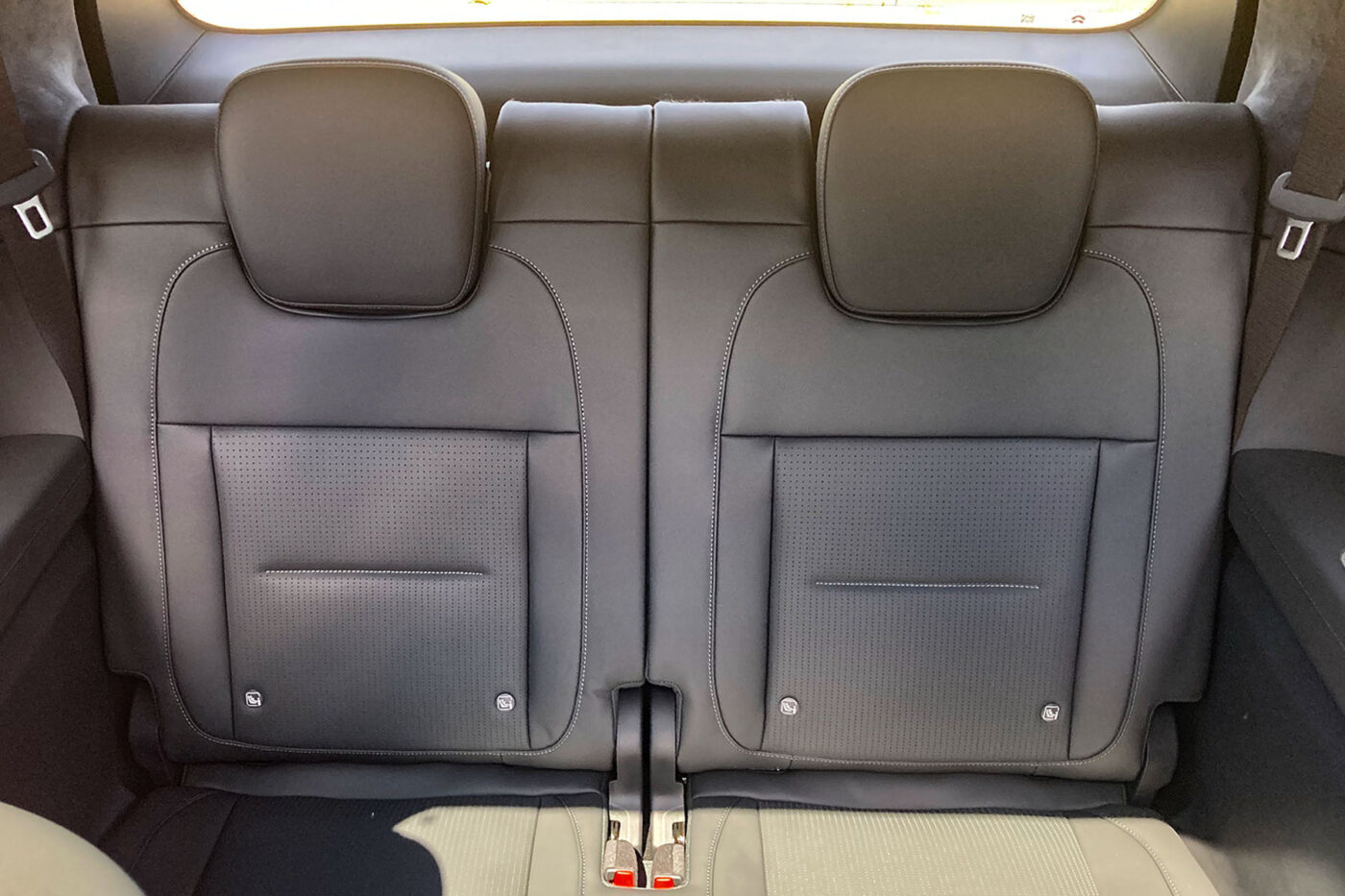
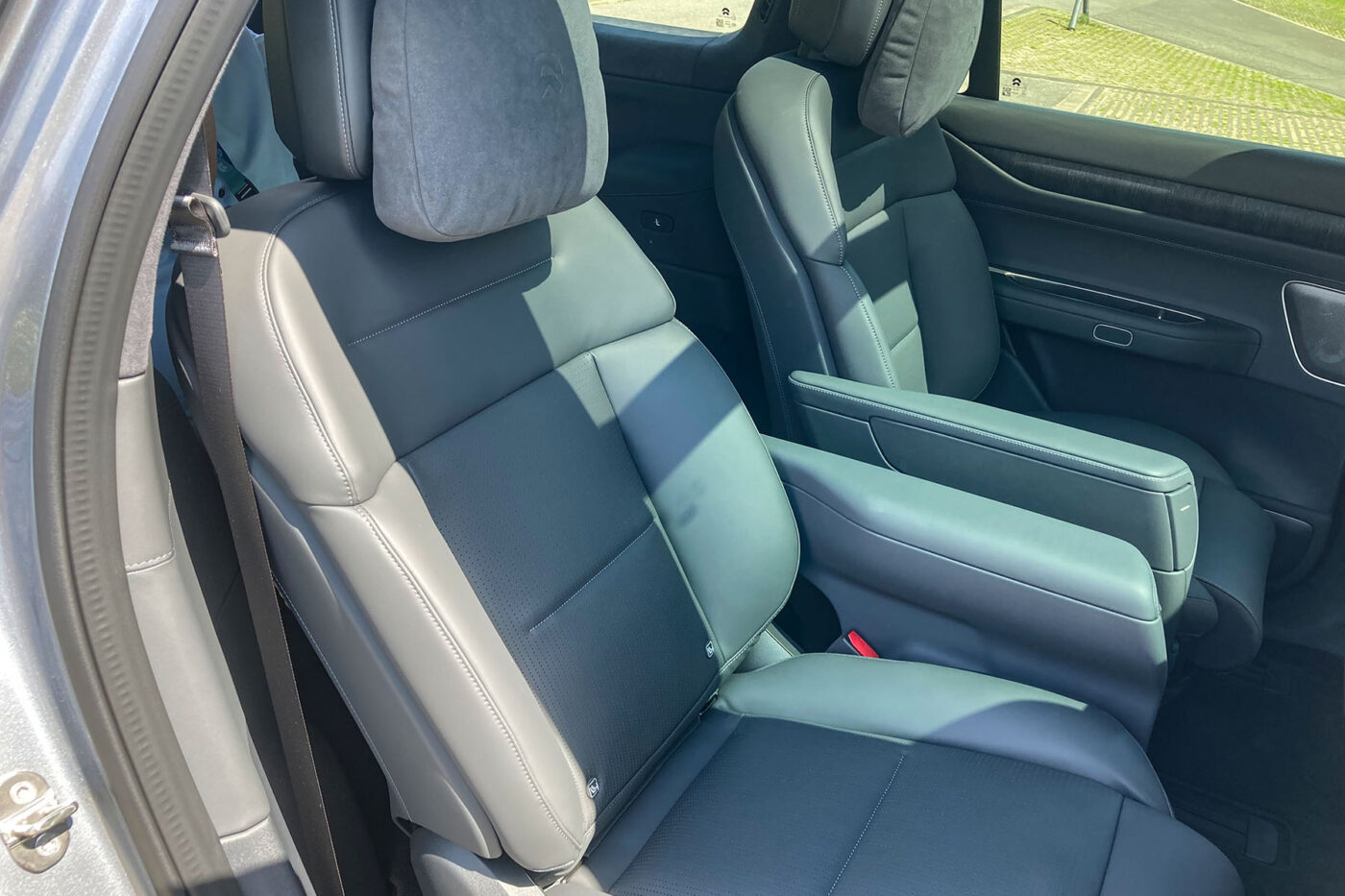
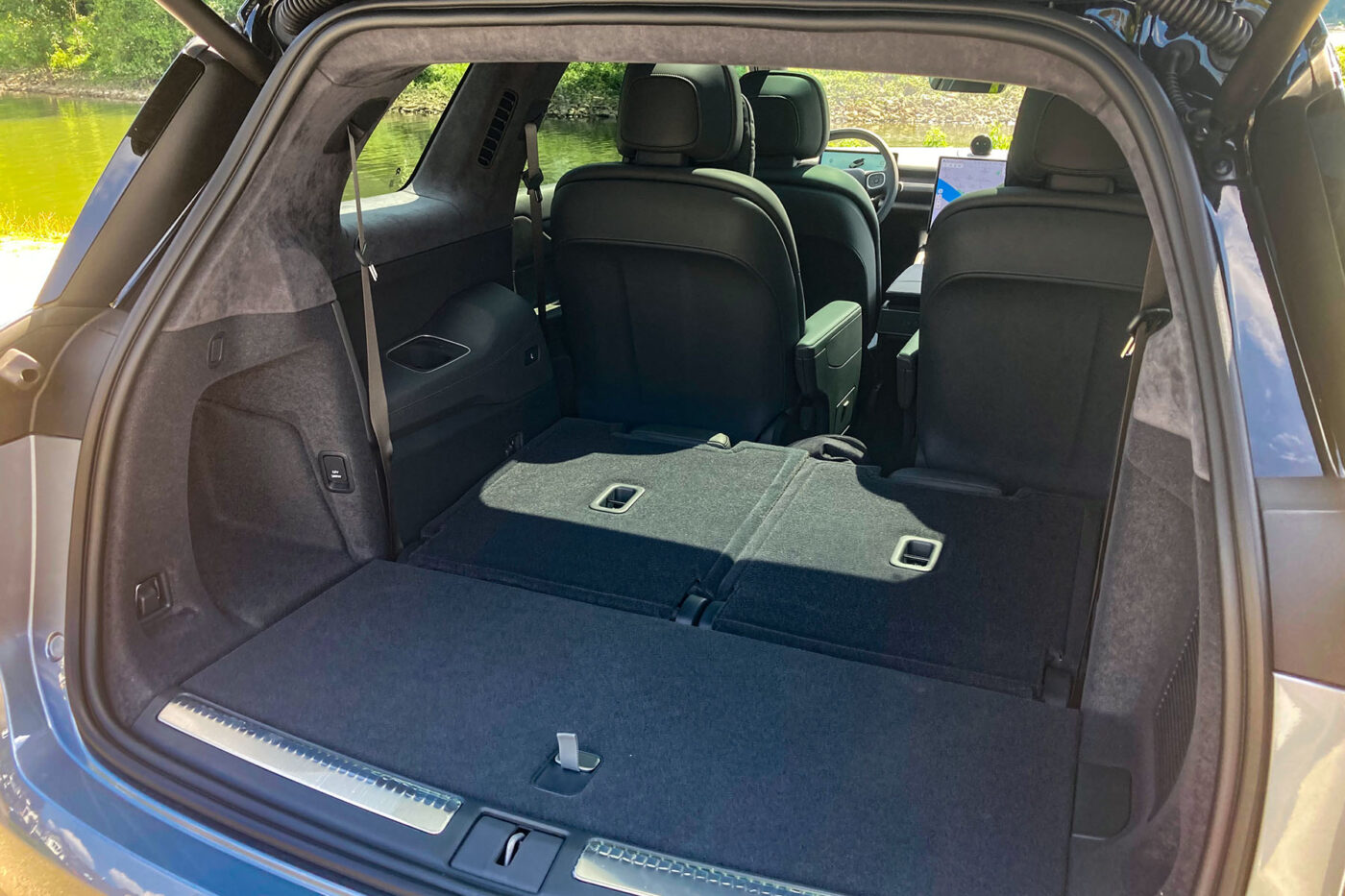
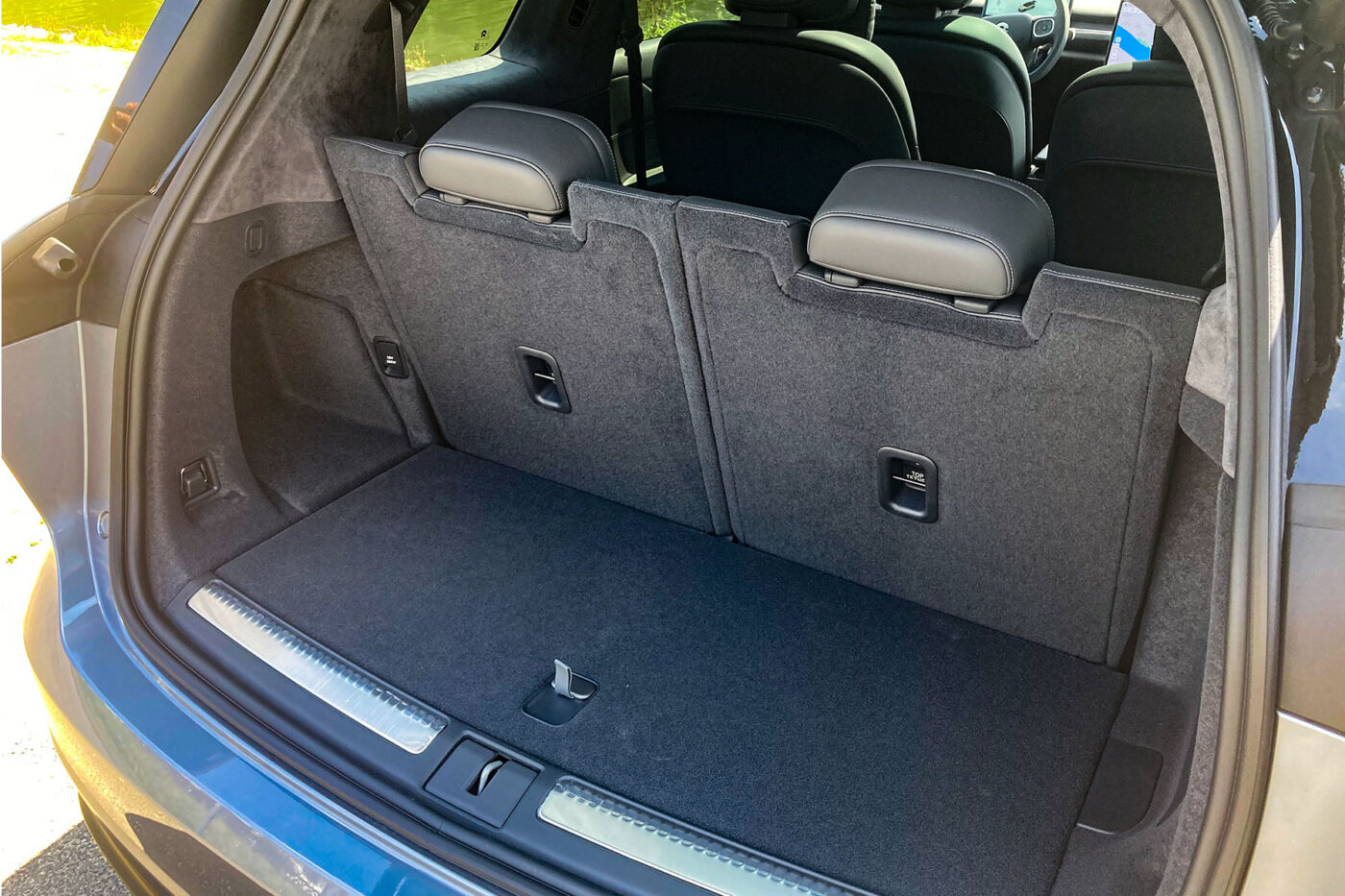

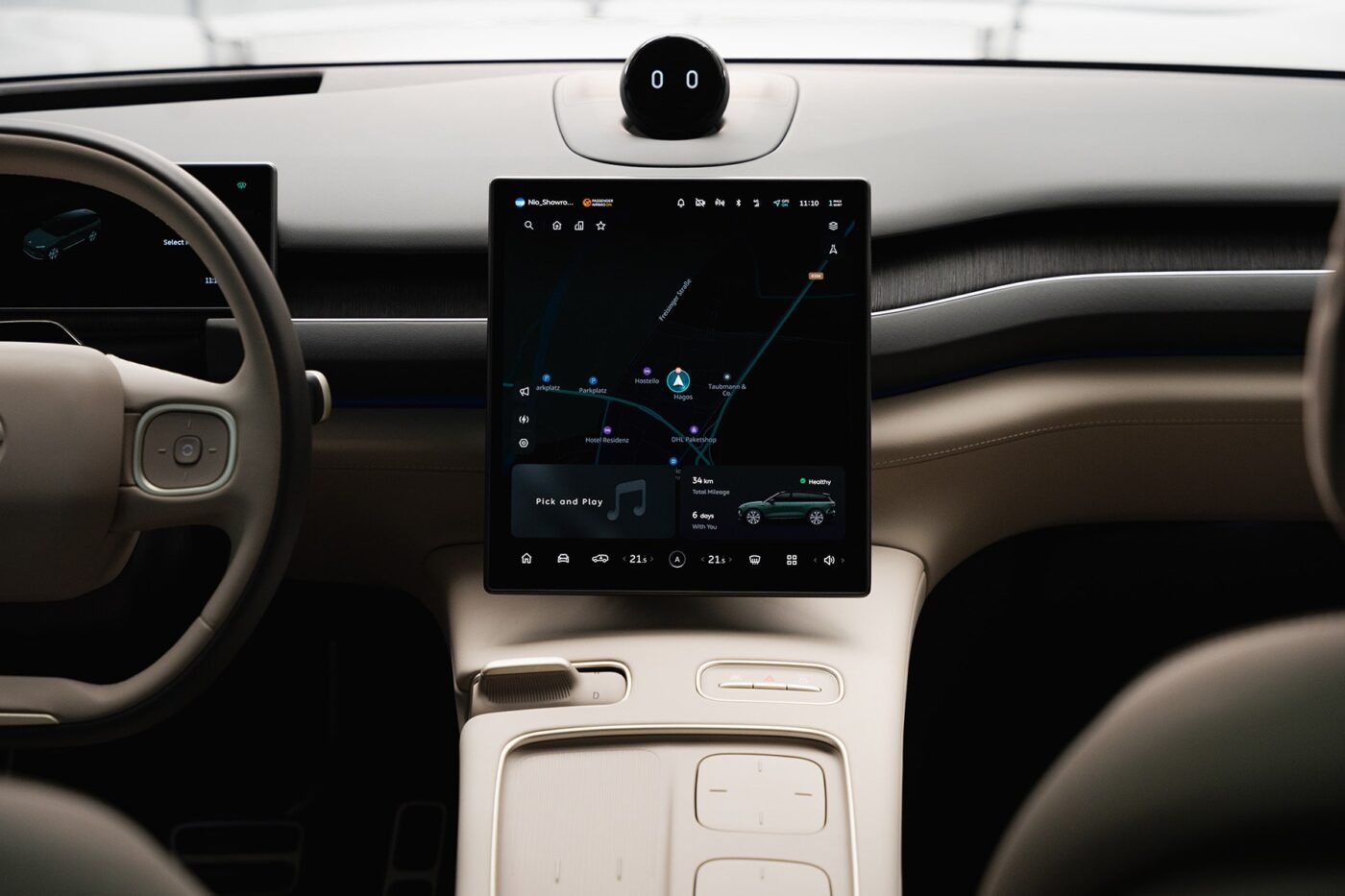
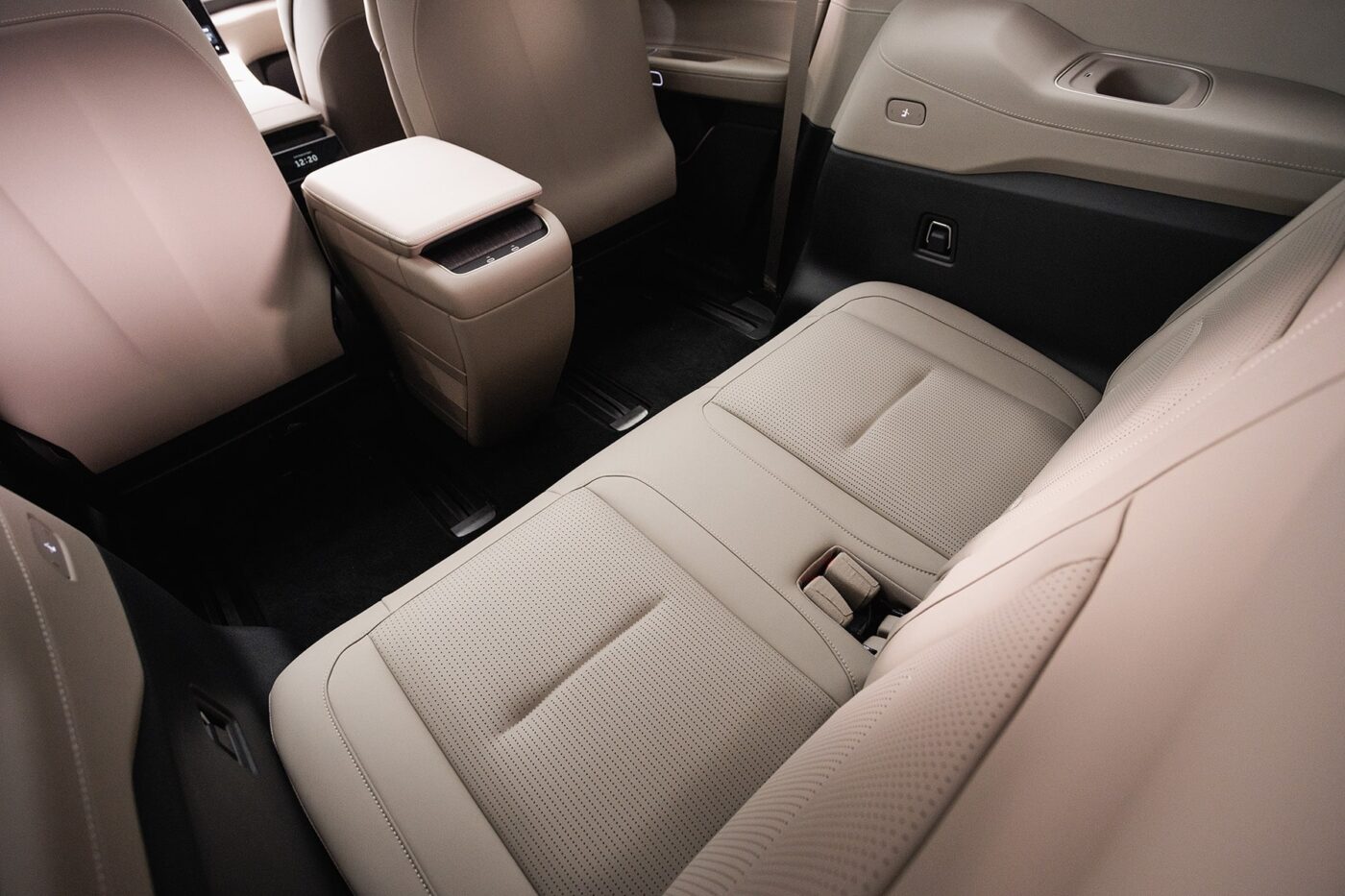


Our test vehicle was the standard version. The comfortable single seat could be electrically adjusted to a very comfortable position with enormous legroom. If the seat was a little further forward (so that it was still very comfortable and airy for me at 1.85 metres), I could also find a reasonably comfortable place in the rear row of seats. There was no lack of headroom, the legroom was just about ok – only the knee angle would have been a bit uncomfortable in the long run. However, it was probably one of the most comfortable seating options I have experienced in the last row of a six- or seven-seater SUV.
The downside of this seating comfort is that the boot space shrinks. With all six seats, only 265 litres fit into the load compartment. The backrests of the rearmost seats can be folded down electrically, increasing the load volume to up to 810 litres when the two individual rear seats are moved all the way forward. These seats cannot be folded down completely or even removed. There is thus no continuous area and, with the backrests of seats five and six folded down, no real separation between the boot and the seating area. Once again, the orientation of the model becomes clear – it is a premium SUV for chauffeurs and families, not a packhorse. Anyone spending just under or over 100,000 euros on an electric car will probably not drive the old washing machine to the recycling centre themselves – but have it transported instead. Or you can use the towing capacity of up to two tonnes for such transport. With four people and holiday luggage, however, care must be taken to secure the load. There is an Isofix attachment on all four rear seats.
Since we just mentioned the prices: The Nio EL8 is available from 82,900 euros in the standard version in Germany, but only with the BaaS offer. This means that the well-known 169 euros per month for the standard range battery or 289 euros per month for the long-range battery we tested are added. The total cost of buying a battery is 94,900 or 103,900 euros. For the ‘Executive’ model, Nio charges 87,900 euros with the same battery prices or 99,900 euros with the purchase of the small battery and 108,900 euros with the purchase of the large battery.
Conclusion
With the EL8, Nio is targeting a similar clientele to Kia with the EV9 – the South Korean company also offers the large SUV with six seats on request, including two individual seats in the centre. However, unlike the Nio, the EV9 is also available with five or seven seats and a classic three-seater rear bench. With the EL8, Nio has focussed entirely on comfort for four to six passengers. If that meets the requirements, the EL8 can fully fulfil them. However, if the new car is also intended to load larger objects or a large dog is to travel in the large car, things become more difficult.
The advances in charging technology and software, including the assistance systems, make the Nio an interesting alternative – because it will probably be a while before you can really travel flexibly through Europe just by changing batteries (even if it is already possible on some routes). A charging time of 20 minutes with a 400-volt system is fully competitive.


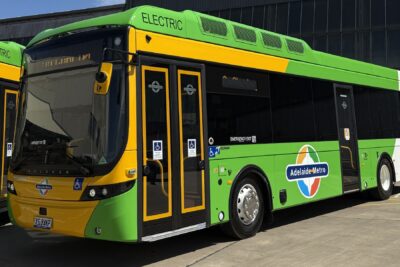

1 Comment